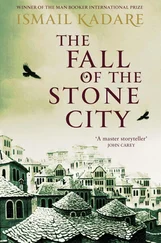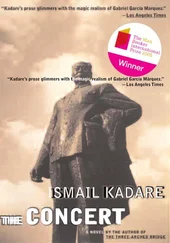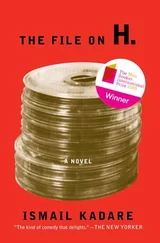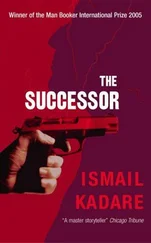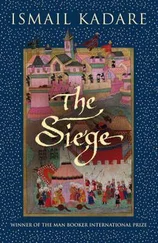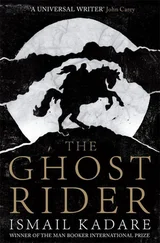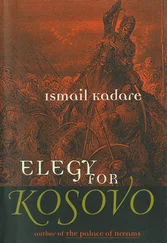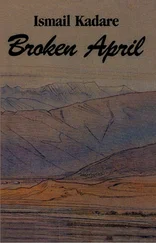The puzzle seemed both decipherable and indecipherable at the same time. It appeared inaccessible, since dismantling the pyramid was inconceivable — for most people, at any rate. It is true that some said: “What if, one fine morning, what with all the heat and the boredom, Cheops decided, just like that, to do the unthinkable, to do what no Pharaoh before him had ever dared? What if he gave the order for the pyramid to be taken down, step by step, until the evil was laid bare?”
The ambivalence of the puzzle terrified every living soul. It was only a few yards away, right there, under its stone cowl. It was in between the two forms of life, but not entirely in either one, like the unburied dead, or like a living person walking through the market arm in arm with his ghost, of whom you could hardly decide which one made the more terrifying sight.
What was now generally understood was the way it had all started seven years earlier, with the howling of a jackal on the night of a full moon. The animal had followed the block of stone from the quarry at Abusir, across the Saqqara desert, to the outskirts of Memphis, and the itinerary, as well as some other details, had now been corroborated by more than one witness. The magician Gezerkareseneb had spent a whole night wandering about the face of the pyramid with a flickering torch in order to make out the exact position of the stone, the place where its journey had finally come to an end. Comparisons between the data that he collected and statements by witnesses, and especially a study of the quarry’s delivery notes, of the stone’s bill of lading in the archives of the Ferries and Waterways Department, of the first and second control certificates, and the results of various complicated calculations that apparently had nothing to do with these documents, established the fact beyond any possibility of error that the fatal stone was the two hundred and four thousand and ninety-third piece in the south slope, or, in the recording system used in the general inventory, stone n° 92 308 130393 6.
The figure looked rather bizarre, but everyone paid much more attention to what might be hidden in the pyramid than to the block’s actual number.
Most people imagined it was a papyrus, in other words a secret document containing some threat or blackmail attempt, or else a warning for the future in case time suddenly changed its direction or its speed, as Jaqub Har had supposedly foretold.
Despite the oddness of its number, the formal identification of the stone nonetheless damped down the general level of anxiety. At least people knew that they were dealing with a piece of stone that had been hewn from a quarry, cut and shaped by stonemasons, inspected by a benevolent or threatening inspector, certified by a seal placed on it by a warehouse official, loaded onto an eight-oared ferry, then hauled on a buffalo cart whose drivers, like all their fellow hauler, had bellowed, spat, and sworn the whole journey long, had got drunk or else had pushed some peasant girl into a muddy field by the wayside. (Sometimes, the attackers got themselves so covered in mud from head to toe that they could not tell who was who any more and ended up raping each other,) Then it had been past the officials who recorded goods arriving at and leaving from the central depots more inspectors., dockers (who “docked” the stone by securing it onto the dolly that slid up and down the ramp), pullers and pushers, and superintendents., before finally reaching the stonelayers.
Scarcely more than four hundred men had had to do with it, six hundred at the outside. Since the stone had been hewn and placed seven years earlier, half of the unfortunate men who had taken a part in the laying of that stone were no longer of this world. So even if they arrested all the survivors, together with their families, acquaintances, and drinking companions, even going so far as to include their mistresses and those who had infected them with the clap, they would have bagged no more than two or three thousand people, a mere trifle in the human anthill of Egypt.
But such consoling reflections did not last very long. The original worries resurfaced, because of the number of the stone. To begin with it was noticed that the number contained two digits that were intended to exclude or perhaps to assimilate entirely the two pieces on either side of the accursed piece. But that was nothing compared to the misfortunes that followed: in all probability, the stone’s official number was quite unrelated to reality. To put it another way, it was perfectly obvious which stone was involved, but for easily imaginable reasons (secrecy, disinformation to confuse the enemy, etc.) the number given was completely wrong. As was the row where it was believed to be situated. And also its coordinates of location with respect to the vertical axis and the plane.
That was enough to make it seem within a few days as if the whole of Egypt had been smitten with apoplexy. Fresh rumors emerged only tentatively, made their way with difficulty along the tendrils of the grapevine. There was talk of a different number. Some people said that, according to the latest leak, the stone had been buried much lower down, in step fifteen, somewhere near the level of the sovereign’s funeral chamber. Then it was alleged that it was not just one stone that was involved, but a whole row, row number one hundred and four, or so it seemed. Then other blocks of stone were mentioned, then other rows or half-rows, all of which served to make everyone feel unsafe. Men who had been only too happy to reminisce complacently about the time when they had worked at the Abu Gurob quarry on stones for the tenth or the ninetieth row, or in the false door workshops, for there was nothing they could be reproached with (“Ha! in our time it was all good honest work, the suspicious stuff didn’t start until later! ”) now ran away to hide as soon as they heard that the investigation was approaching their rows, or wrapped their heads in wet towels for fear of losing their minds.
Nobody was arrested meanwhile, but that was not a good sign either. The only thing that remained unchanged was that the streets and the markets were deserted. As always, the perfume shops were the first to be closed, followed in turn by the tanneries, the bars, and the inns.
“I see Egypt, but where have all the Egyptians gone?” was what the Sumerian foreign minister was supposed to have exclaimed, riding through the town in a horse-drawn carriage after a reception given by Cheops.
Since passersby gave him the slip, he ended up putting his question to Youyou the drunkard, the only person who would agree to converse with him.
“You want to know where the Egyptians have gone?” Youyou answered at last, his tear-filled eyes fixed longingly on the patio of the bar that had been closed. “Up my asshole, that’s where. Where else do you want them to be?”
He made a charming sign to the minister’s wife, then, after yelling at the coachman, made off with a wobbly gait.
Little by little, one by one, the investigation cast its net over them all, and they became a multitude greater than ever before. People who had never even worked on the pyramid, people who for health reasons had never set foot in a quarry or stepped onto a row, aged and twitching aristocrats who were now virtually incapacitated, society ladies who never rose before noon — all were now roped into the same fetid atmosphere and the same dust, all mixed in and muddled up with people who really had worked on the building site.
There was always one string of the investigation to tie someone up, to draw him out of his cocoon, and to take him four, seven, or fourteen years back to the time when his errors began. If it failed to tie its victim up straight away, then the victims themselves, in their attempts to escape, got themselves into a tangle, pulled the whole skein toward themselves, and were entrapped. So even as their bodies lay huddled in the warmth of their beds, their terrorized minds were up and out before dawn, just like the host of builders in bygone days, ready to start work under the torrid sun and the whip, in order to repent for their share of guilt.
Читать дальше


